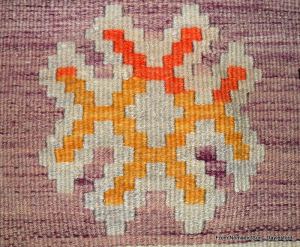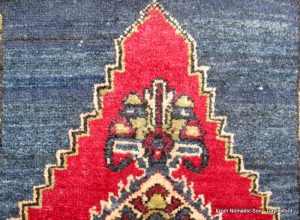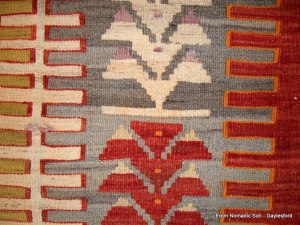:A change in colour in hand woven rugs due to differences in the wool or dye batches. The colour change extends along the rug, weft-wise. Literally translated it can mean ‘dappled’, ‘mottled’ or ‘speckled’.
Abrash in a hand woven rug can add greatly to the visual interest of a piece. Abrash is more noticeable when the wool has been spun by hand, as the uneven tension of the wool causes the dye intake to vary along the length of the wool. These variations in colour are not always visible at the time of the dying or weaving and instead, can be more evident over time through use and exposure to light.
“Abrash gives a liveliness, depth and subtlety to tribal kilims. An accident of the spinning and dyeing processes, and therefore technically a defect, abrash produces colour nuances that are highly prized.”
(P.Davies, Antique kilims of Anatolia, p22)
We find that abrash is much more common in older and antique kilims. In new production kilims, the wool is machine spun and usually synthetic dyes are used, slowly eliminating this enchanting aspect of kilims. Not that this is a surprise really when you take into account the processes involved in hand spun wool and natural dyes, compared to machine spun wool and synthetic dyes. An already labour intensive process of weaving a kilim is multiplied exponentially when the weaver cuts, cards, spins and dyes her own wool.
One of the wonderful results of abrash is that instead of having a palette of 4-5 primary colours in a kilim, the weaver can indirectly create multitudes more shades and tones adding to her piece.
Peter Davies talks about a ‘random’ abrash and a ‘contrived’ abrash. Random being unintentionally and contrived where the weaver has perhaps consciously chosen to weave the abrash.
“There are kilims in which the colours reach their most intense shade at the top of the mihrab (Prayer arch), precisely where the focal point should be.”
(P.Davies, Antique kilims of Anatolia, p23)







